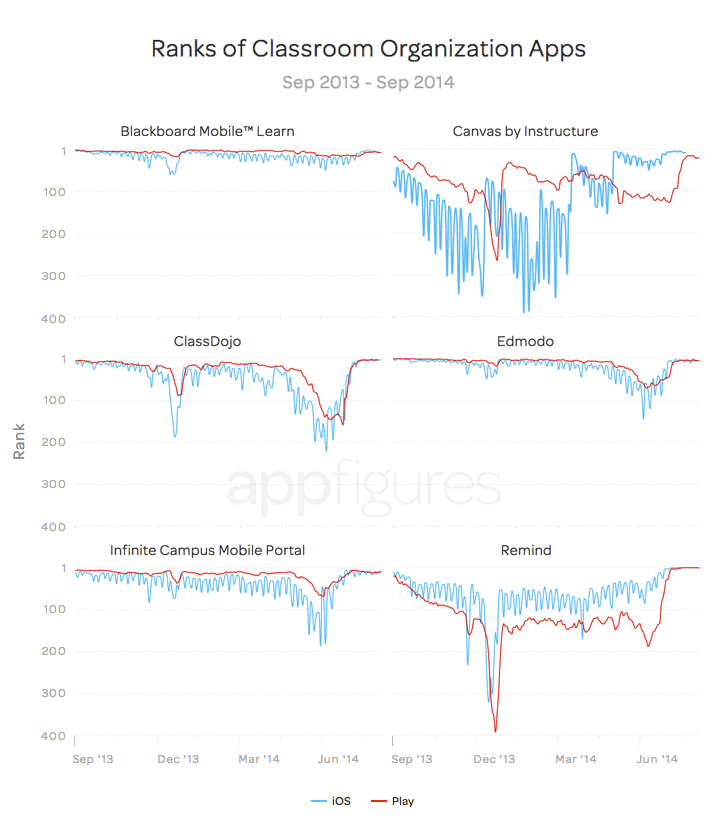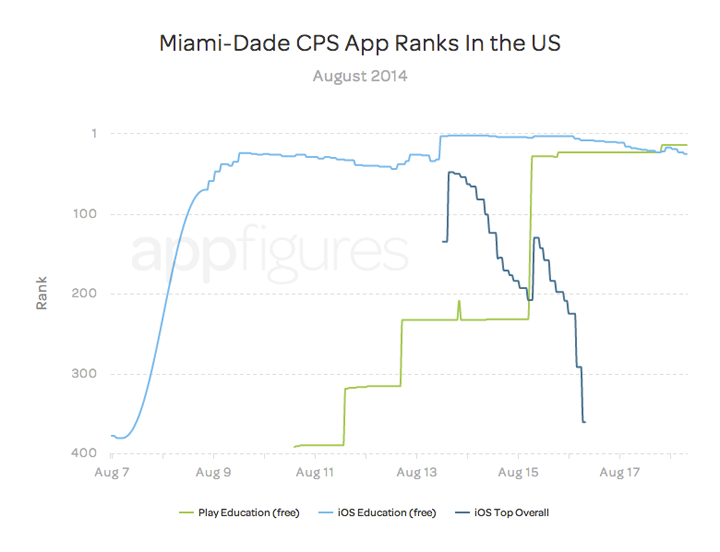School Calendar Changes App Rankings, As Apps Take the Classroom Mobile
Smartphone access among teens has increased substantially over the past years. According to a 2013 report by the Pew Research Center’s Internet & American Life Project, nearly 4 out of 10 teens now own a smartphone. With summer winding down and school underway, we thought it would be interesting to discuss a certain kind of innovation app developers are bringing to the educational sector and how school districts are incorporating this technology into the classroom.
Classroom Communication and Organization
In the Education category, there is a particular group of ‘freemium’ apps that make it easier for educational stakeholders (e.g. schools, teachers, parents) to communicate and share information about student progress in the classroom. Blackboard, the original classroom organizer, is still widely used, but its poor average user rating (2.2 stars) has opened the door for significant competition.
For now, these apps are dominating the ranks of the Education categories, but this dominance is seasonal. Below are the ranks of Blackboard Mobile and five of its direct competitors from September 2013 to September 2014: Canvas by Infrastructure, ClassDojo, Edmodo, Infinite Campus Mobile Portal, and Remind.

Regardless of where in the ranks each app appears, they all share similar movements that track the academic calendar. Each rank series starts at the peak of its popularity as teachers, students, and parents download their designated application and prepare for class. As the fall semester continues, rankings slowly begin to slide with a sharp drop during winter break. Most of the rankings bounce back as the 2014 spring semester begins and hold their positions until summer recess. As you might expect, rankings for these type of apps tend to slip during the summer, with ClassDojo, Edmodo, and Infinite Campus Mobile Portal the most noticeable. Oddly, the iOS ranks for Remind and Canvas strengthen during the first half of summer. As the current fall semester approaches, all apps again surge up the ranks to peak popularity.
While investigating these education-centered products, we came across another classroom organization app developed by Miami-Dade County Public Schools (M-DCPS). Its release coincided with the start of the 2014/2015 school year. As one of the largest public county school district in the United States, the potential consumer base for an M-DCPS app is large enough to drive it into the top ranks of the education category for iOS and Play, as well as peaking at 48th in Apple’s top overall category.

Miami-Dade is not the only school system providing mobile services to their constituents either. The developer SchoolInfoApp has been providing local schools and districts with classroom communication and organization apps with content and features localized to their community.
Moving forward, it will be interesting to see how much traction these locally developed classroom apps gain outside the app stores, and in the broader education community. It’s clear that a big push by school districts throughout the country are making them more commonplace, but with a focus on parent engagement, will these applications have any real impact on student achievement or test scores? Let us know what you think, below.